Unreported intrinsic disorder in proteins: Building connections to the literature on IDPs
- PMID: 28232880
- PMCID: PMC5314882
- DOI: 10.4161/21690693.2014.970499
Unreported intrinsic disorder in proteins: Building connections to the literature on IDPs
Abstract
This review opens a new series entitled "Unreported intrinsic disorder in proteins." The goal of this series is to bring attention of researchers to an interesting phenomenon of missed (or overlooked, or ignored, or unreported) disorder. This series serves as a companion to "Digested Disorder" which provides a quarterly review of papers on intrinsically disordered proteins (IDPs) found by standard literature searches. The need for this alternative series results from the observation that there are numerous publications that describe IDPs (or hybrid proteins with ordered and disordered regions) yet fail to recognize many of the key discoveries and publications in the IDP field. By ignoring the body of work on IDPs, such publications often fail to relate their findings to prior discoveries or fail to explore the obvious implications of their work. Thus, the goal of this series is not only to review these very interesting and important papers, but also to point out how each paper relates to the IDP field and show how common tools in the IDP field can readily take the findings in new directions or provide a broader context for the reported findings.
Keywords: intrinsically disordered protein; molecular recognition; posttranslational modification; protein function; protein-protein interaction.
Figures

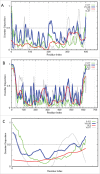

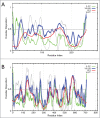
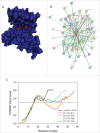
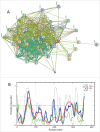
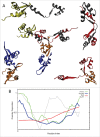




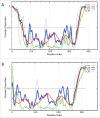


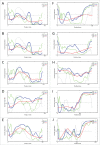
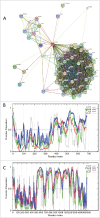


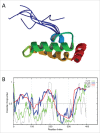
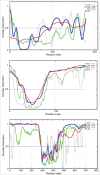
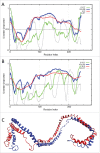
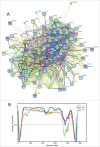
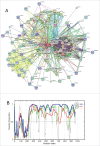

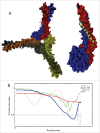

Similar articles
-
Unreported intrinsic disorder in proteins: Disorder emergency room.Intrinsically Disord Proteins. 2015 Apr 22;3(1):e1010999. doi: 10.1080/21690707.2015.1010999. eCollection 2015. Intrinsically Disord Proteins. 2015. PMID: 28232885 Free PMC article.
-
Intrinsically disordered proteins and intrinsically disordered protein regions.Annu Rev Biochem. 2014;83:553-84. doi: 10.1146/annurev-biochem-072711-164947. Epub 2014 Mar 5. Annu Rev Biochem. 2014. PMID: 24606139 Review.
-
The alphabet of intrinsic disorder: II. Various roles of glutamic acid in ordered and intrinsically disordered proteins.Intrinsically Disord Proteins. 2013 Apr 1;1(1):e24684. doi: 10.4161/idp.24684. eCollection 2013 Jan-Dec. Intrinsically Disord Proteins. 2013. PMID: 28516010 Free PMC article. Review.
-
Intrinsic disorder-based protein interactions and their modulators.Curr Pharm Des. 2013;19(23):4191-213. doi: 10.2174/1381612811319230005. Curr Pharm Des. 2013. PMID: 23170892 Review.
-
The intrinsic disorder alphabet. III. Dual personality of serine.Intrinsically Disord Proteins. 2015 Mar 17;3(1):e1027032. doi: 10.1080/21690707.2015.1027032. eCollection 2015. Intrinsically Disord Proteins. 2015. PMID: 28232888 Free PMC article. Review.
Cited by
-
Unreported intrinsic disorder in proteins: Disorder emergency room.Intrinsically Disord Proteins. 2015 Apr 22;3(1):e1010999. doi: 10.1080/21690707.2015.1010999. eCollection 2015. Intrinsically Disord Proteins. 2015. PMID: 28232885 Free PMC article.
-
Biomolecular condensates-Prerequisites for anhydrobiosis?Protein Sci. 2025 Jul;34(7):e70192. doi: 10.1002/pro.70192. Protein Sci. 2025. PMID: 40521613 Review.
-
Investigation of Outbreak-Specific Nonsynonymous Mutations on Ebolavirus GP in the Context of Known Immune Reactivity.J Immunol Res. 2018 Nov 15;2018:1846207. doi: 10.1155/2018/1846207. eCollection 2018. J Immunol Res. 2018. PMID: 30581874 Free PMC article.
-
Exploring intrinsically disordered proteins in Chlamydomonas reinhardtii.Sci Rep. 2018 May 1;8(1):6805. doi: 10.1038/s41598-018-24772-7. Sci Rep. 2018. PMID: 29717210 Free PMC article.
-
Properties of biomolecular condensates defined by Activator of G-protein Signaling 3.J Cell Sci. 2024 Feb 15;137(4):jcs261326. doi: 10.1242/jcs.261326. Epub 2024 Feb 22. J Cell Sci. 2024. PMID: 38264908 Free PMC article.
References
-
- Uversky VN. Digested disorder: quarterly intrinsic disorder digest (January/February/ March, 2013). Intrinsically Disord Proteins 2013; 1:e25496; http://dx.doi.org/ 10.4161/idp.25496 - DOI - PMC - PubMed
-
- DeForte S, Reddy KD, Uversky VN. Digested disorder, issue #2: quarterly intrinsic disorder digest (April/May/June, 2013). Intrinsically Disord Prot 2013; 1:e27454; http://dx.doi.org/ 10.4161/idp.27454 - DOI - PMC - PubMed
-
- Reddy KD, DeForte S, Uversky VN. Digested disorder, issue #3: quarterly intrinsic disorder digest (July-August-September, 2013). Intrinsically Disord Prot 2014; 2:e27833; http://dx.doi.org/ 10.4161/idp.27833 - DOI - PMC - PubMed
-
- Peng ZL, Kurgan L. Comprehensive comparative assessment of in-silico predictors of disordered regions. Curr Protein Pept Sci 2012; 13:6-18; PMID:22044149; http://dx.doi.org/ 10.2174/138920312799277938 - DOI - PubMed
-
- Andreou AZ, Klostermeier D. eIF4B and eIF4G jointly stimulate eIF4A ATPase and unwinding activities by modulation of the eIF4A conformational cycle. J Mol Biol 2014; 426:51-61; PMID:24080224; http://dx.doi.org/ 10.1016/j.jmb.2013.09.027 - DOI - PubMed
LinkOut - more resources
Full Text Sources
Other Literature Sources
